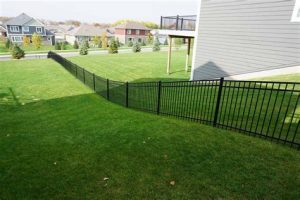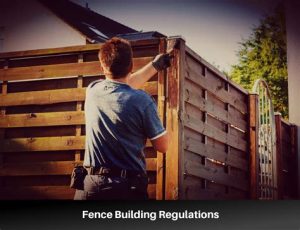Learn how to navigate zoning regulations, research local permits, prepare application documents, submit applications, and follow up on permit approval status.When it comes to enhancing your property’s curb appeal and security, installing a fence can be a great investment. However, before you start planning your dream fence, it’s crucial to navigate the often-complex world of fence installation permits. Each municipality has its own set of zoning regulations and permits that dictate what you can and cannot do on your property. This comprehensive guide will walk you through the essential steps, from understanding zoning regulations and researching local permit requirements to preparing your application documents and following up on approval status. With the right knowledge and preparation, you can ensure a smooth and successful fence installation process, allowing you to enjoy your new addition without the worry of legal complications. Let’s dive into the key aspects of obtaining a fence installation permit.
Understanding zoning regulations
When considering a fence installation, one of the primary factors you must address is the local zoning regulations. These regulations are designed to maintain the aesthetic and functional harmony of the community, and they can significantly impact your fence project.
Zoning regulations dictate various aspects, such as the height, design, and location of your fence. For example, some zones may allow fences up to 6 feet tall in residential areas, while others might have restrictions that require lower heights. Additionally, the position of the fence in relation to the property line is crucial; regulations often specify how close a fence can be built to the edge of your yard.
It’s essential to consult your local zoning ordinances, which can typically be found on your city or county’s official website. Many municipalities also provide user-friendly tools and resources to assist homeowners in understanding these zoning laws. If you’re unsure about specific requirements, reaching out to your local zoning office can provide clarity and prevent potential issues down the road.
Researching local permit requirements
When considering a fence installation, one of the most crucial steps is researching local permit requirements. Each locality has different regulations that govern fencing, including height limits, material restrictions, and aesthetic guidelines. It is essential to understand these regulations to avoid potential fines or the need to remove non-compliant structures later.
Typically, the first step in this process is to contact your local zoning office or building department. They can provide you with the necessary information on what permits are required for your specific project. In some cases, you may find that a simple fence does not require a permit, while other more complex installations may have stricter guidelines that must be followed.
- Is a permit required for my fence type and height?
- What documentation do I need to provide?
- Are there any setback requirements from property lines?
- Are there aesthetic standards I must adhere to?
Understanding the local permit requirements will not only streamline the installation process but also ensure that your project is compliant with local laws, thus safeguarding your investment in your property.
Preparing permit application documents
When it comes to fence installation permits, preparing the necessary application documents is a crucial step in ensuring a smooth approval process. Proper documentation not only speeds up the review process but also minimizes the chances of delays or rejections.
- Site Plan: This is a detailed drawing that illustrates the proposed location of the fence, including dimensions and the distance from property lines.
- Property Deed: A copy of your property deed might be necessary to confirm ownership and boundaries.
- Construction Details: Provide specifications regarding the material, height, and type of the fence being installed.
- Any Additional Supporting Documents: Depending on local regulations, you may also need to submit additional documentation such as photographs or letters of consent from neighbors.
It is highly recommended to check with your local government’s zoning office or website for a comprehensive list of required documents. This proactive approach will ensure that you gather all necessary information and avoid potential pitfalls during the application process.
Submitting application to local government
Once you have prepared all the necessary documentation for your fence installation permit, the next crucial step is submitting your application to the local government. This process is often more straightforward than it seems, but it is essential to follow the required steps meticulously to avoid any delays in approval.
The first step in the submission process typically involves visiting the local planning or zoning office. Here, you can either submit the application in person or check if online submission options are available. It’s advisable to confirm the method accepted by your local government. Be sure to have multiple copies of your application and supporting documents, as you may be required to provide them to different departments.
In many cases, there is an associated fee for processing your permit application. This fee can vary depending on your location and the scope of the project. Ensure that you are aware of the costs involved and have prepared the payment in accordance with local guidelines. After submission, keep a record of your application and any references provided during this process for your future follow-ups.
Following up on permit approval status
After submitting your permit application for a fence installation, it’s important to stay engaged with the process to ensure a smooth approval. While many local governments strive to process applications quickly, various factors can lead to delays. Following up can provide you with information regarding the status of your application and highlight any issues that may need your attention.
- Keep Records: Maintain a file with all the documents submitted, including the application receipt and any correspondence with the local government.
- Contact the Relevant Office: Reach out to the department responsible for the permit. This is often the planning or zoning department, and they can provide updates on your application’s status.
- Be Persistent but Polite: If you don’t get an immediate response, don’t hesitate to follow up again. However, being courteous will foster a better relationship with the officials.
By staying proactive in this stage of the permit application process, you can minimize delays in getting your fence installed and ensure that you comply with any requested changes to your project plans.
Frequently Asked Questions
What are fence installation permits?
Fence installation permits are legal approvals required by local authorities before you can build a fence on your property.
Why do I need a permit to install a fence?
Permits are necessary to ensure that fences comply with local zoning laws, property lines, and safety regulations.
How do I apply for a fence installation permit?
You typically need to submit an application to your local building or zoning department, which may include plans for the fence, details on its height and materials, and possibly a property survey.
Are there specific regulations for fence height?
Yes, many municipalities have regulations concerning maximum fence height, which can vary depending on the type of area (residential, commercial, etc.) and the location of the fence within the property.
What happens if I build a fence without a permit?
Building a fence without a permit can result in fines, a order to remove the fence, or other legal actions from your local government.
How long does it take to get a fence installation permit?
The timeline can vary based on your location and the specific regulations in place, but generally, it can take anywhere from a few days to several weeks.
Can I appeal a permit denial?
Yes, if your permit is denied, many local governments allow you to appeal the decision through a formal process, which often includes a hearing.





